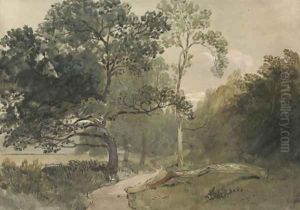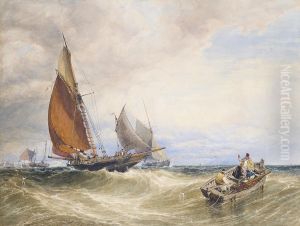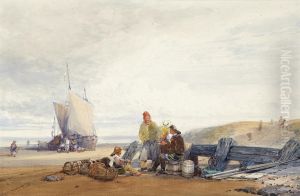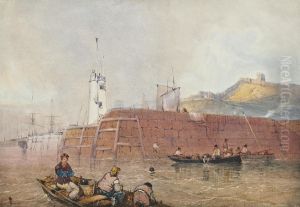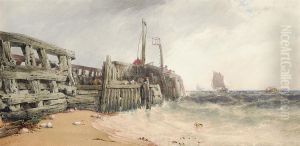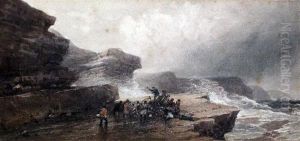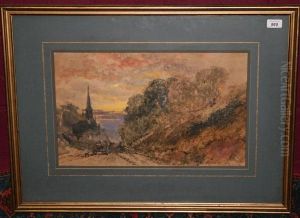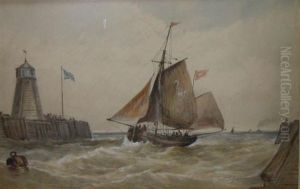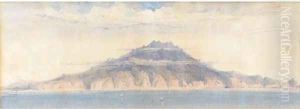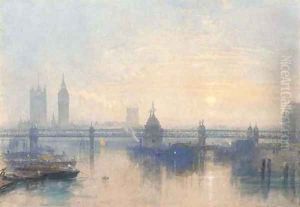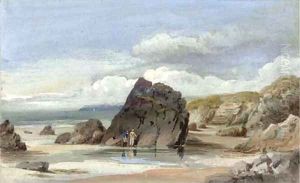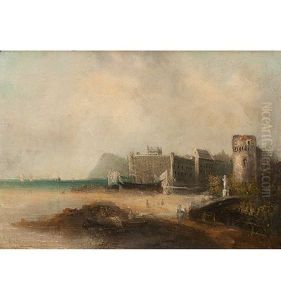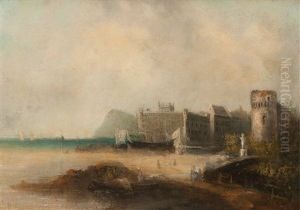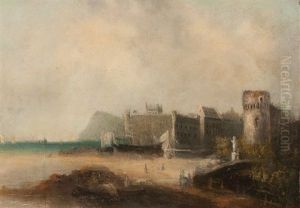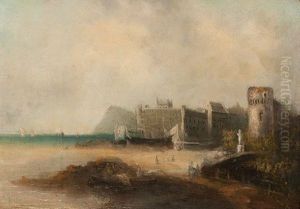William Roxby Beverley Paintings
William Roxby Beverley was a notable British painter and scenic designer, born in 1811 in London, England. He was part of a talented family, with his father, William Beverley, being an accomplished artist himself. This environment undoubtedly nurtured his artistic talents from a young age. Beverley's early career was influenced by his father's artistic circles and the vibrant cultural scene of London during the 19th century. Despite the lack of extensive documentation on his early life, it is known that Beverley's passion for art was evident from his youth, leading him to pursue a career that blended his interests in painting and theatre.
Beverly's contributions to the art world are particularly noted in his scenic designs for the theatre. His innovative approach to stage design significantly influenced the visual presentation of theatre productions in the Victorian era. He was renowned for his ability to create detailed and atmospheric landscapes on stage, which added depth and realism to theatrical productions. His work was not limited to landscapes, as he also designed sets for various types of performances, ranging from dramas to operas, showcasing his versatility as an artist.
In addition to his work in theatre, Beverley was also an accomplished landscape painter. He had a keen eye for capturing the natural beauty of the English countryside, which was a popular subject among artists of the time. His paintings often depicted serene scenes that highlighted his mastery in the use of light and shadow, creating a sense of tranquility and depth. Beverley's landscapes were well-received by the public and critics alike, further establishing his reputation as a skilled artist.
Despite his success, William Roxby Beverley remained a relatively private figure, with much of his personal life and artistic process shrouded in mystery. He continued to work and contribute to the art and theatre communities until his death in 1889. Today, Beverley's legacy lives on through his contributions to scenic design and landscape painting. His work is recognized for its significant impact on the visual aspects of theatre and the arts in the Victorian period, marking him as an important figure in the history of British art.
